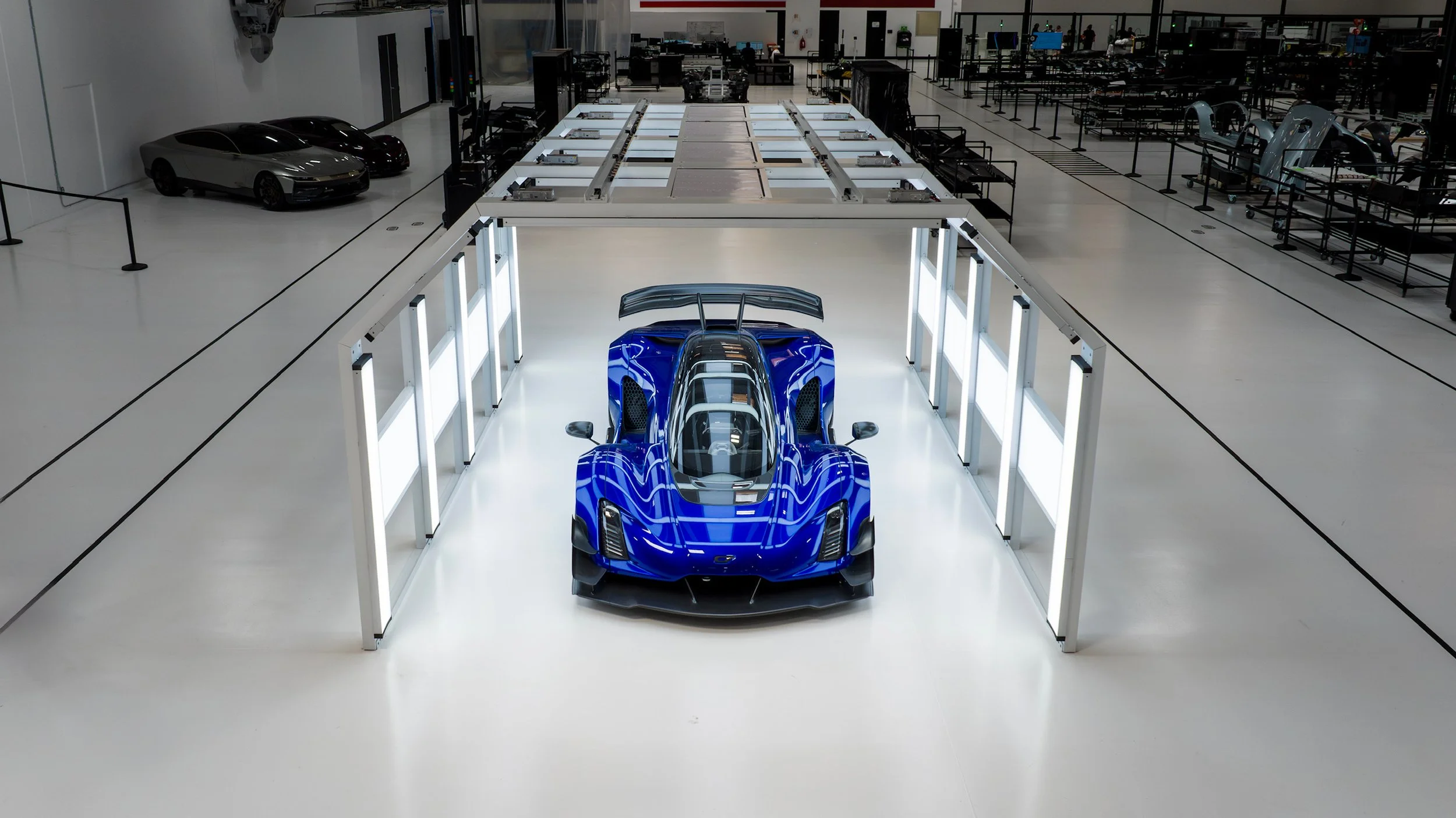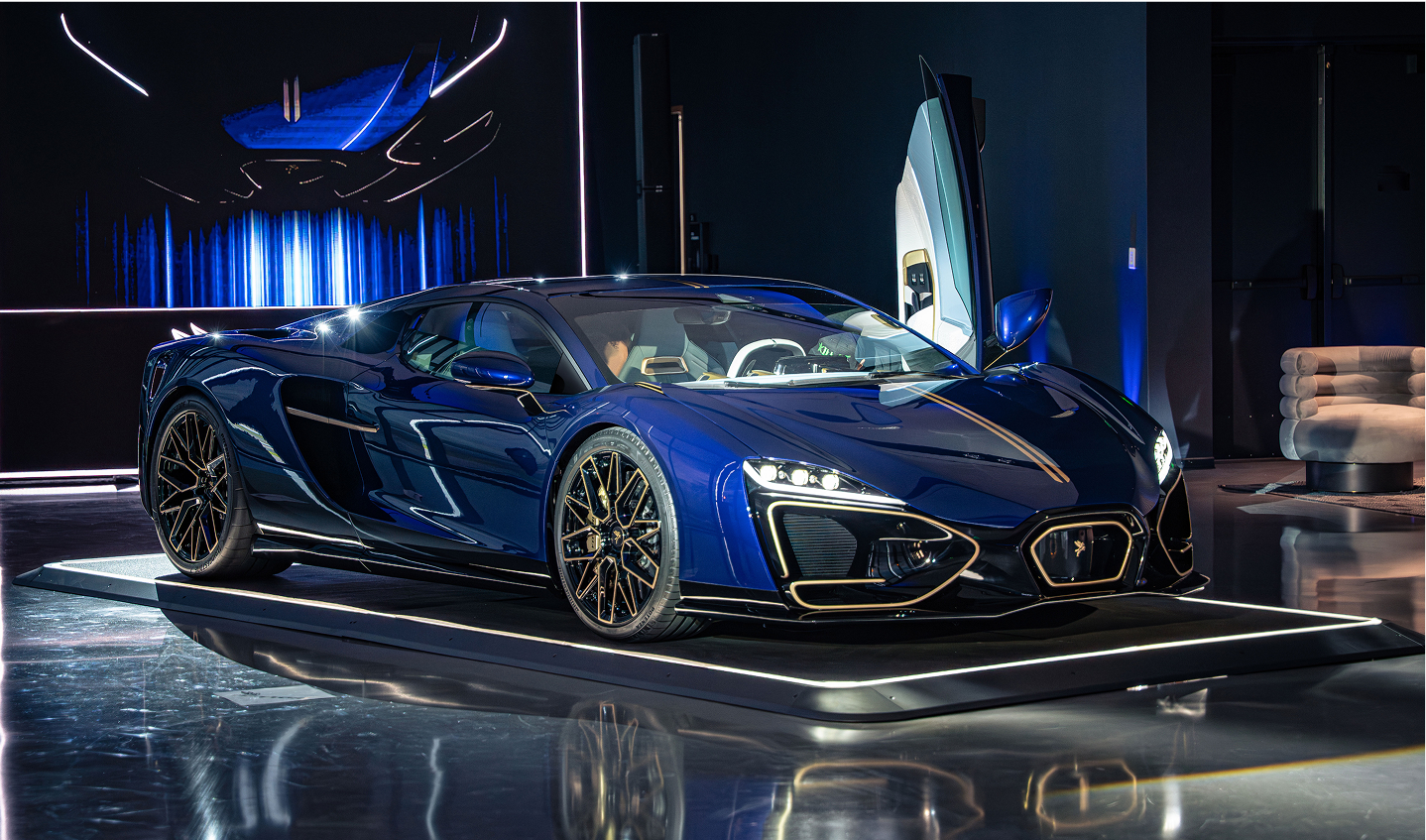The Future of Speed: Can AI and 3D Printing Create the Next Hypercar Revolution?
Chapter 1: Introduction — A New Era of Hypercar Engineering
The hypercar segment has always evolved through extremes — extreme power, extreme materials, extreme aerodynamics. But traditional engineering methods are reaching their natural limits. Manufacturers can no longer rely solely on bigger engines, more cylinders, or incremental aerodynamic tweaks to push performance forward. The next breakthrough will come from technologies that operate outside conventional automotive logic: artificial intelligence and additive manufacturing.
In recent years, AI has transformed from a data-processing tool into an active design and engineering instrument. Hypercar manufacturers now use machine-learning systems to simulate aerodynamic behavior, predict structural weaknesses, and optimize component designs before a single physical prototype is built. Instead of relying on a few dozen wind-tunnel tests, AI can evaluate thousands of configurations within hours. This level of computational power enables engineers to explore shapes, load paths, and packaging strategies that would have been unimaginable a decade ago.
Simultaneously, 3D printing has matured into a production-ready manufacturing process capable of creating complex, lightweight, and structurally optimized components. Unlike traditional machining, which removes material from a block, additive manufacturing builds components layer by layer, allowing the creation of internal lattice structures, curved load paths, and integrated cooling channels. These features reduce weight, improve rigidity, and enhance thermal efficiency — all crucial elements in the pursuit of hypercar performance.
The true revolution emerges when AI and 3D printing work together. AI-generated geometries are often too complex for casting or milling but ideal for additive manufacturing. This synergy closes the loop between digital optimization and physical production, enabling hypercars to be designed and manufactured with a level of precision and freedom that traditional engineering cannot match.
Early adopters like Czinger, Koenigsegg, and Bugatti are already demonstrating what is possible. Their work suggests that the next era of hypercar performance will be defined not by incremental mechanical upgrades, but by intelligent, algorithm-driven design brought to life through advanced manufacturing.
Chapter 2: How AI Is Rewriting Vehicle Development
Artificial intelligence is no longer a futuristic concept in automotive engineering — it has become a core tool that fundamentally changes how hypercars are conceived, tested, and refined. Traditional development cycles depended heavily on sequential processes: design a component, simulate it, prototype it, test it, refine it, and repeat. Each loop took weeks or months. With AI, this entire cycle compresses into hours. The industry has never seen a tool that accelerates engineering decision-making so aggressively while simultaneously improving accuracy.
One of the most significant impacts of AI lies in aerodynamics. Hypercars push airflow to extreme limits, where even minor inefficiencies can create drag penalties or instability at high speed. Machine-learning models now evaluate aerodynamic behavior across thousands of scenarios without needing physical prototypes or wind-tunnel time. Instead of relying solely on conventional CFD simulations — which are computationally expensive and slow — AI predicts airflow patterns with remarkable precision after being trained on large datasets. This saves enormous development time and allows engineers to explore shapes that would never have been tested under traditional workflows.
AI is also transforming structural engineering. With generative design tools, engineers define performance goals — stiffness, strength, weight — and let algorithms propose hundreds of structure variations optimized for those requirements. This produces highly efficient designs that human engineers would rarely imagine, often featuring organic shapes, hollow lattice structures, or complex curvature that improves load distribution. These designs typically cut weight without sacrificing rigidity, a crucial advantage for hypercars that need maximum strength with minimal mass.
Another area where AI makes a measurable difference is thermal management. Hypercars generate immense heat through their engines, batteries, and braking systems. AI-driven simulations model how heat flows through components and how air moves around them, identifying hotspots and proposing cooling strategies long before physical systems are assembled. This improves reliability, extends component lifespan, and gives designers more freedom in packaging and styling.
AI’s impact also extends to the validation phase. Machine-learning algorithms analyze real-world driving data to predict how components will behave under extreme stress, enabling manufacturers to identify potential failures earlier and reduce the risk of costly redesigns. This predictive maintenance capability is especially important for vehicles operating at the razor’s edge of performance.
In simple terms, AI allows hypercar engineers to explore more ideas, test more variables, and reach optimal solutions faster than ever. It replaces guesswork with precision and enables a level of complexity that traditional methods cannot support. The result is not just faster development but fundamentally better vehicles — sharper, lighter, more stable, and more efficient. AI is not just a tool; it has become a catalyst that reshapes the entire engineering mindset.
Chapter 3: Additive Manufacturing — Beyond Traditional Limits
Additive manufacturing has moved from an experimental niche into a central pillar of next-generation hypercar development. Unlike traditional machining, which removes material from a block, 3D printing builds components layer by layer. This simple shift unlocks engineering possibilities that were previously impossible due to tooling, geometry constraints, or cost. For hypercars — where performance gains often come from shaving off grams, improving rigidity, or optimizing airflow — additive manufacturing is a game-changer.
A critical advantage of 3D printing is its ability to create shapes that traditional manufacturing cannot produce. Internal lattice structures, integrated cooling channels, and organically curved load-bearing elements are now achievable without complex assembly. These designs are not only lighter but often stronger because stress flows more evenly through the printed geometry. This allows engineers to merge multiple components into a single printed unit, reducing part count and improving reliability.
Hypercar manufacturers benefit enormously because their vehicles are low-volume, high-performance, and highly customized — exactly the environment where additive manufacturing thrives.
Take metal 3D printing as an example. Titanium, aluminum, and Inconel are now routinely printed into complex, load-bearing components. Turbo housings, suspension uprights, lightweight brackets, or exhaust manifolds can be designed with intricate details previously unachievable. Integrated thermal barriers, optimized airflow paths, or reinforced stress zones yield parts that are both lighter and more durable.
Another major advantage is rapid iteration. When engineers tweak a generative AI design, they can print the updated part within hours. No tooling adjustments, no lengthy preparation. This shortens development cycles dramatically and allows more variation testing — meaning more innovation in less time.
Even in the context of sustainability, 3D printing brings benefits. Material waste drops sharply because only the material required for the component is used. For hypercars, where exotic alloys are extremely expensive, this matters.
In essence, additive manufacturing is redefining what automotive engineering can do. It removes geometric limits, slashes weight, improves thermal efficiency, and accelerates development. Combined with AI-generated designs, 3D printing becomes not just a tool but a cornerstone for the next wave of hypercar innovation.
Chapter 4: The Synergy — AI-Driven Designs Built Through 3D Printing
Source: Supercar Blondie Youtube
The true disruptive potential in next-generation hypercar engineering does not come from AI or additive manufacturing individually, but from how both technologies amplify each other. Each addresses the limitations of the other: AI generates highly complex geometries far beyond human intuition, while 3D printing is the only manufacturing method capable of turning those geometries into physical, functional components. Together, they form a development ecosystem that breaks entirely with conventional automotive engineering.
At the center of this synergy is generative design. Engineers define performance targets — maximum stiffness, minimal weight, optimized cooling, crash behavior, airflow characteristics. The AI then produces hundreds or thousands of variations, each simulated, each evaluated, each optimized. The resulting shapes often resemble organic structures: branching ribs, internal lattice networks, curved load paths, hollow channels for cooling or airflow. These are structural solutions a human designer would never draw, simply because they operate outside the boundaries of traditional manufacturing.
This is where additive manufacturing becomes indispensable. Traditional machining or casting cannot reproduce these generative designs because they rely on fixed tooling, straight-line cutting paths, and simple mold geometries. A generatively optimized part typically violates all those constraints. 3D printing, however, builds components layer by layer, unconstrained by angles, draft requirements, or internal cavities. In effect, it makes manufacturing complexity-neutral: more complex shapes do not cost more — they become more efficient.
For hypercars, the benefits are immediate and significant. Weight reduction becomes far more precise, as material is placed only where structural loads require it. Thermal performance improves through integrated cooling channels and optimized heat-flow paths. Stiffness and strength increase because load paths are shaped algorithmically rather than compromised by tooling limits. Aerodynamic elements can even be embedded inside the structure, something impossible with traditional fabrication.
Speed is another critical factor. Generative designs can be created within hours, and the corresponding 3D-printed components can be produced within days. What once required several development loops over months can now be executed in a fraction of the time. For low-volume hypercar manufacturers, this agility is a competitive weapon.
Ultimately, the combination of AI and additive manufacturing marks a shift from engineering dictated by manufacturing constraints to engineering dictated solely by physics and performance. The result is a new design culture, one where components are no longer shaped by what tools can do, but by what the vehicle needs to achieve.
This synergy is not a small evolutionary step — it is the foundation of a fundamentally new era in hypercar development.
Chapter 5: Case Studies — Brands Already Leveraging AI and 3D Printing
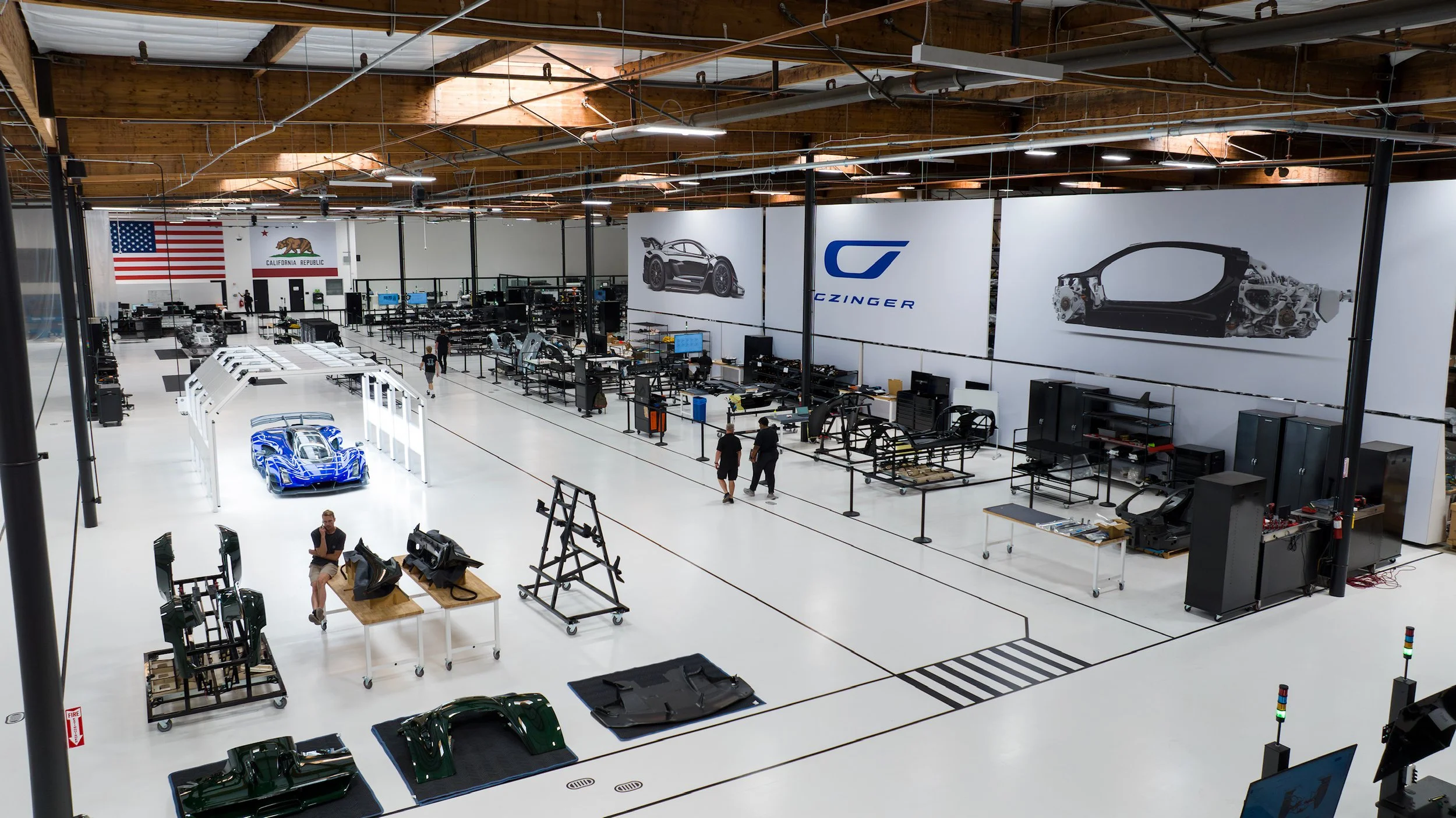

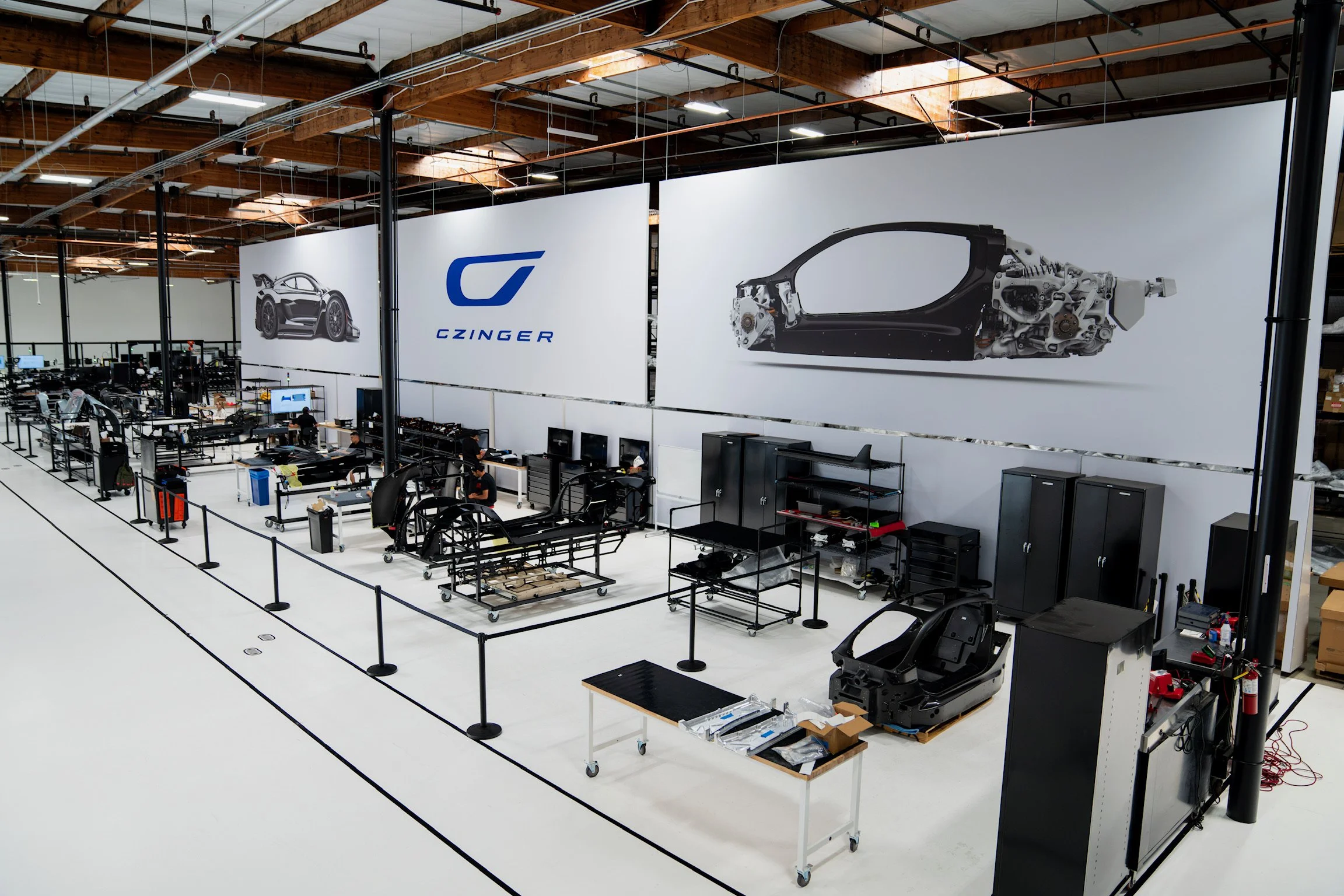
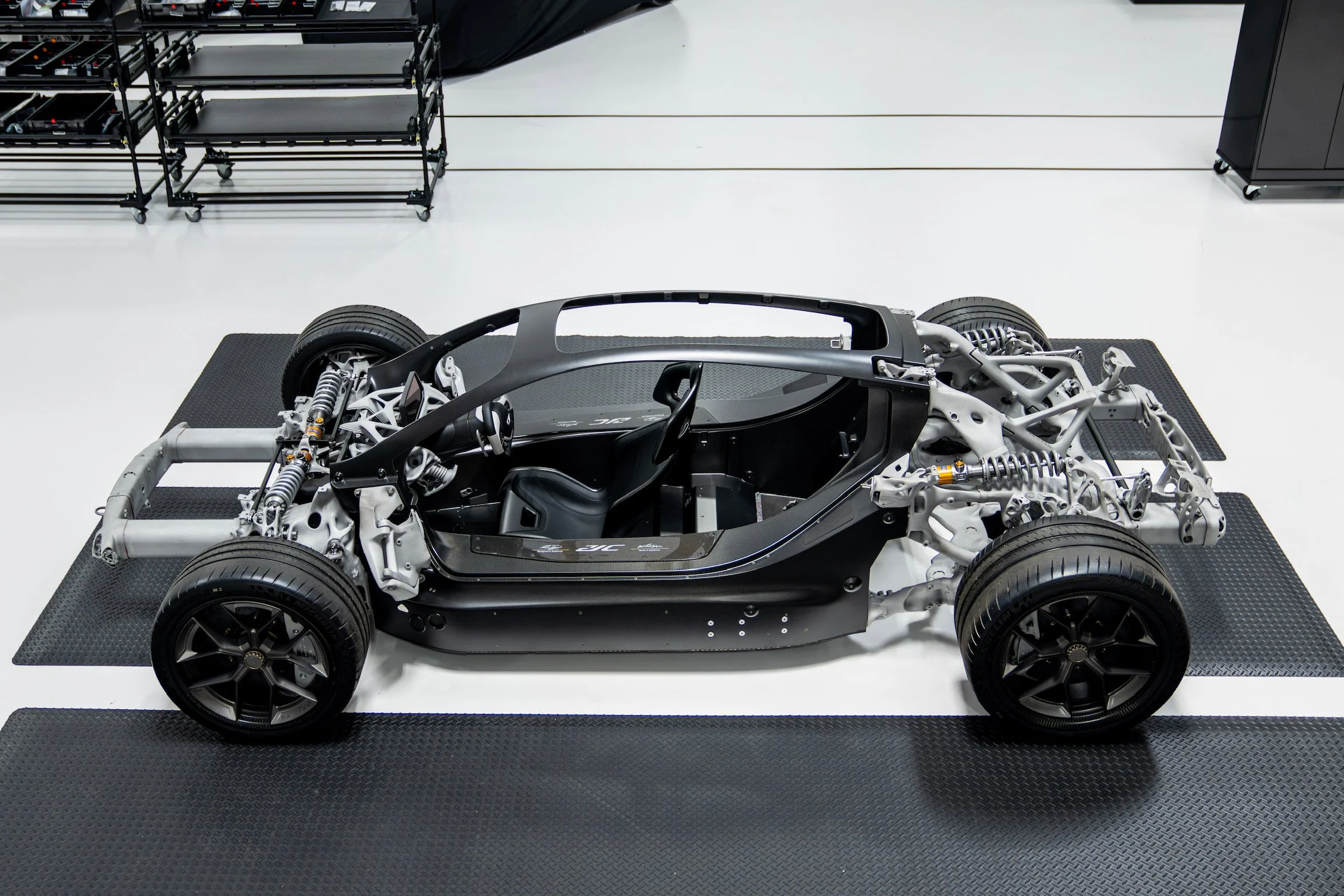
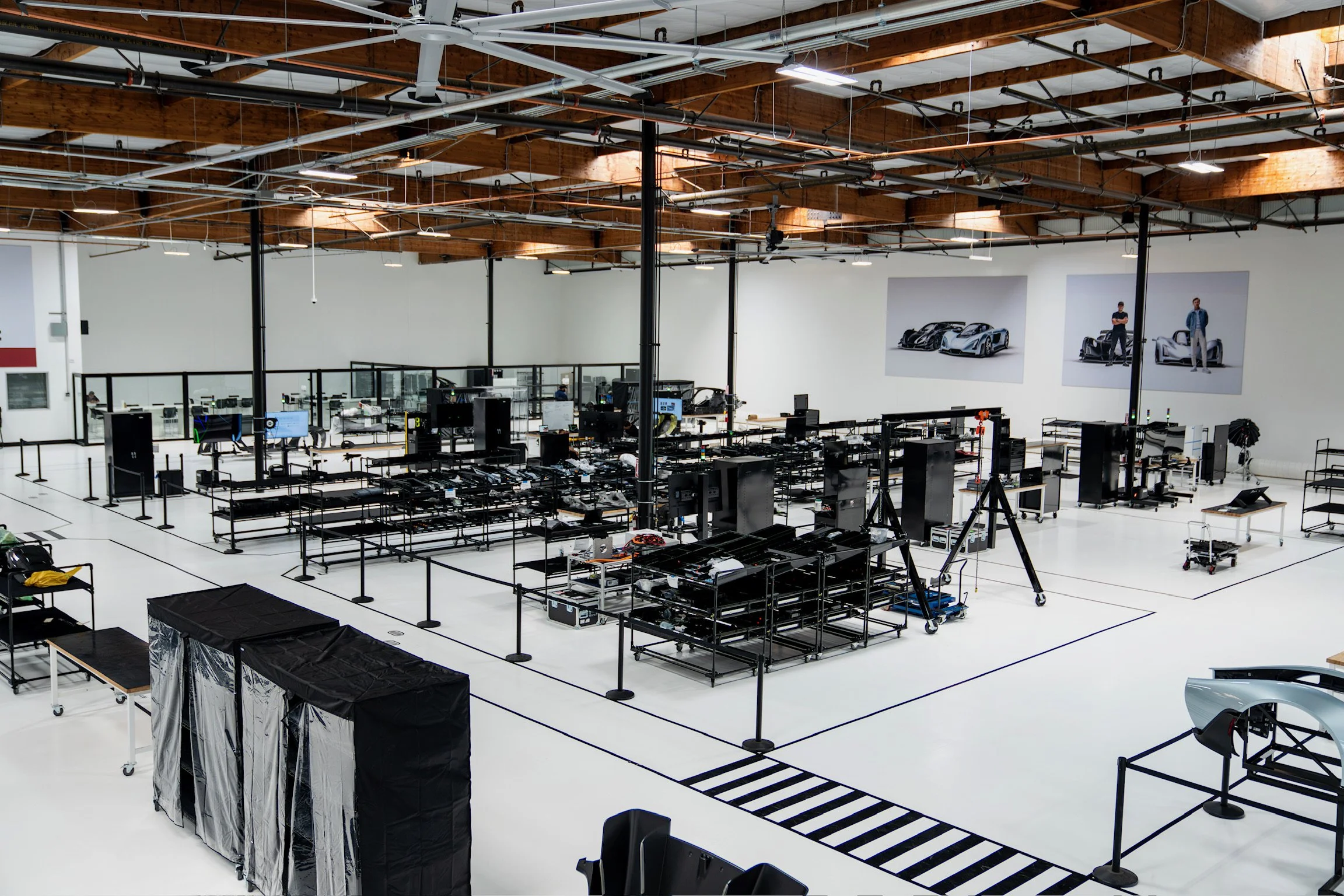
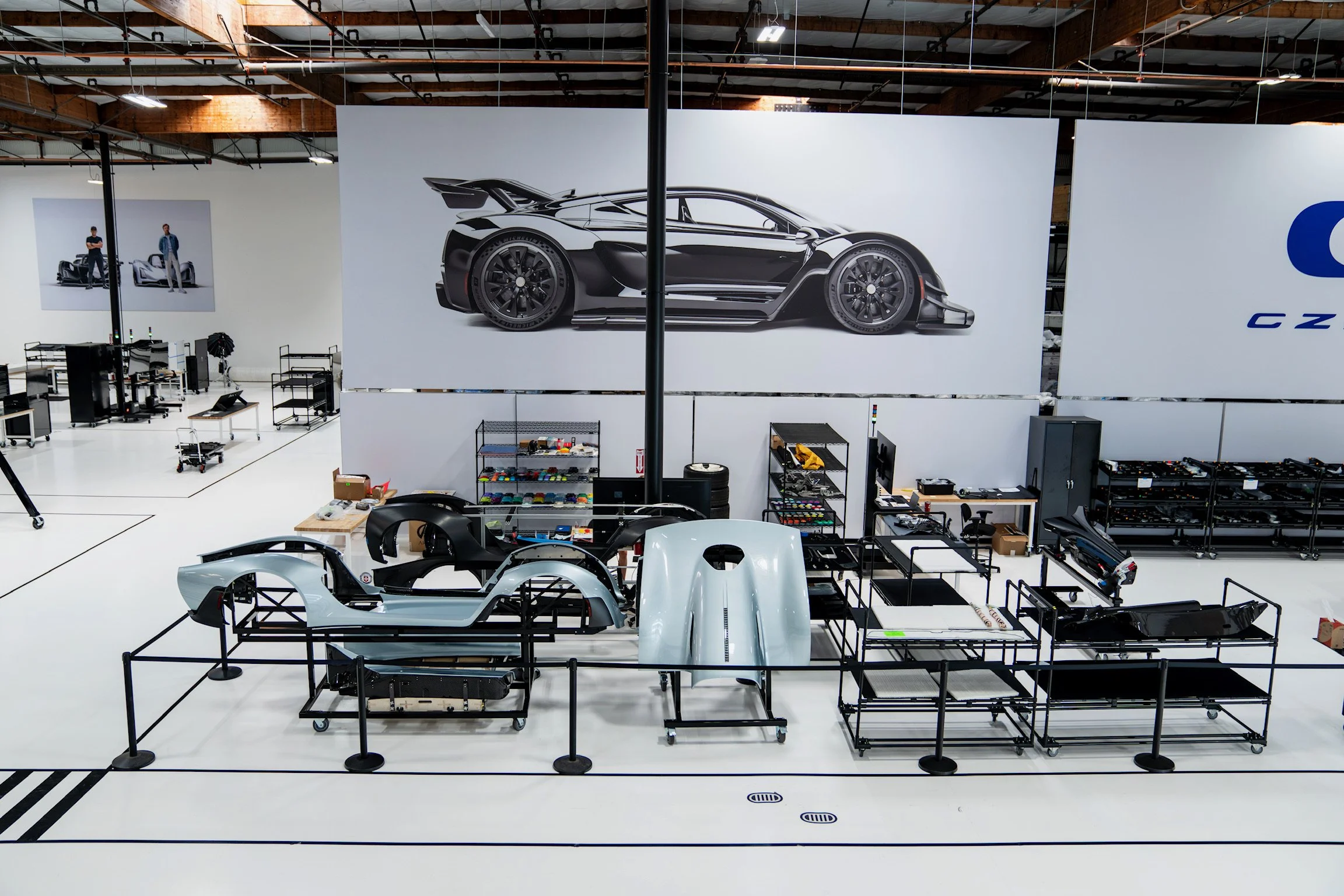
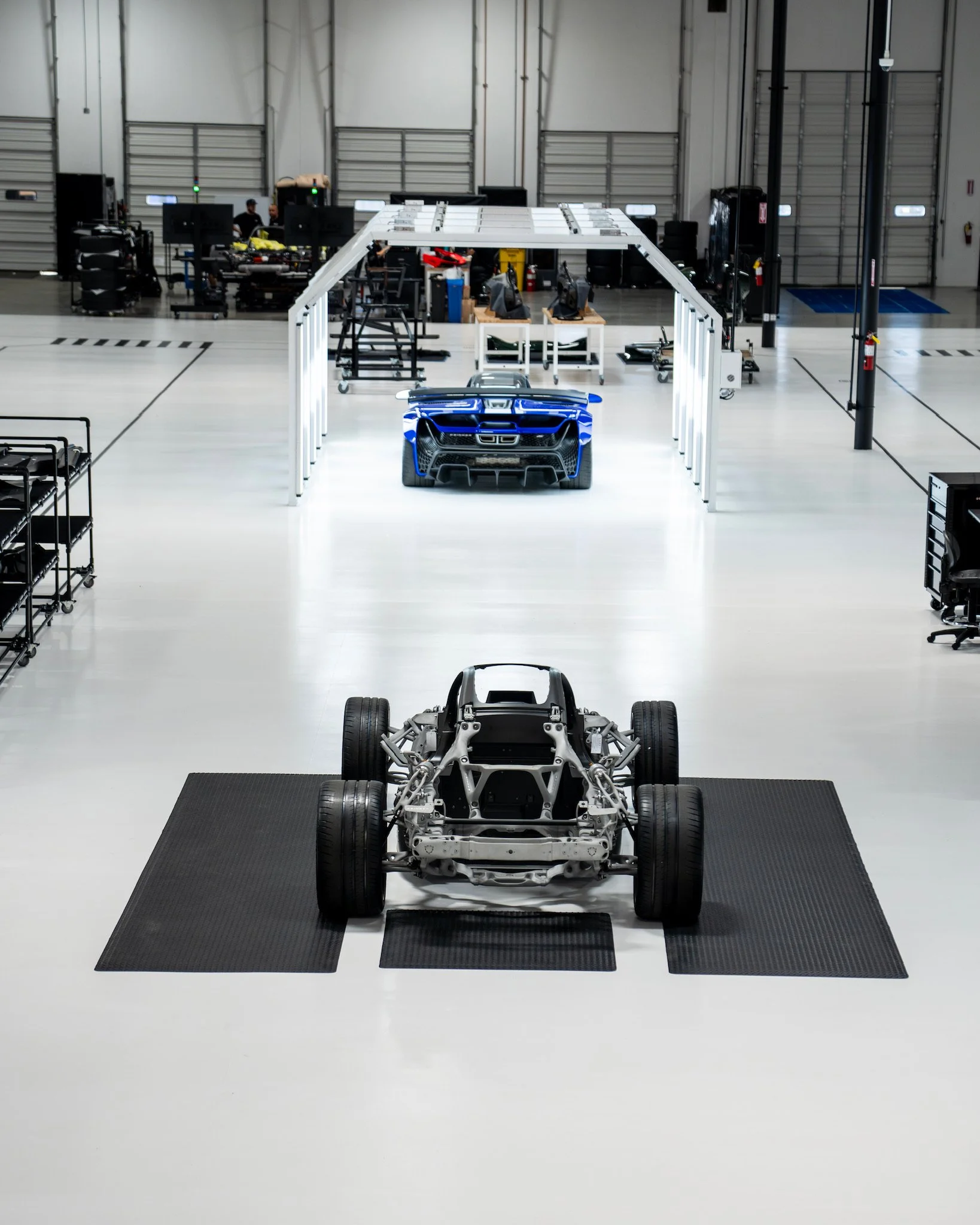
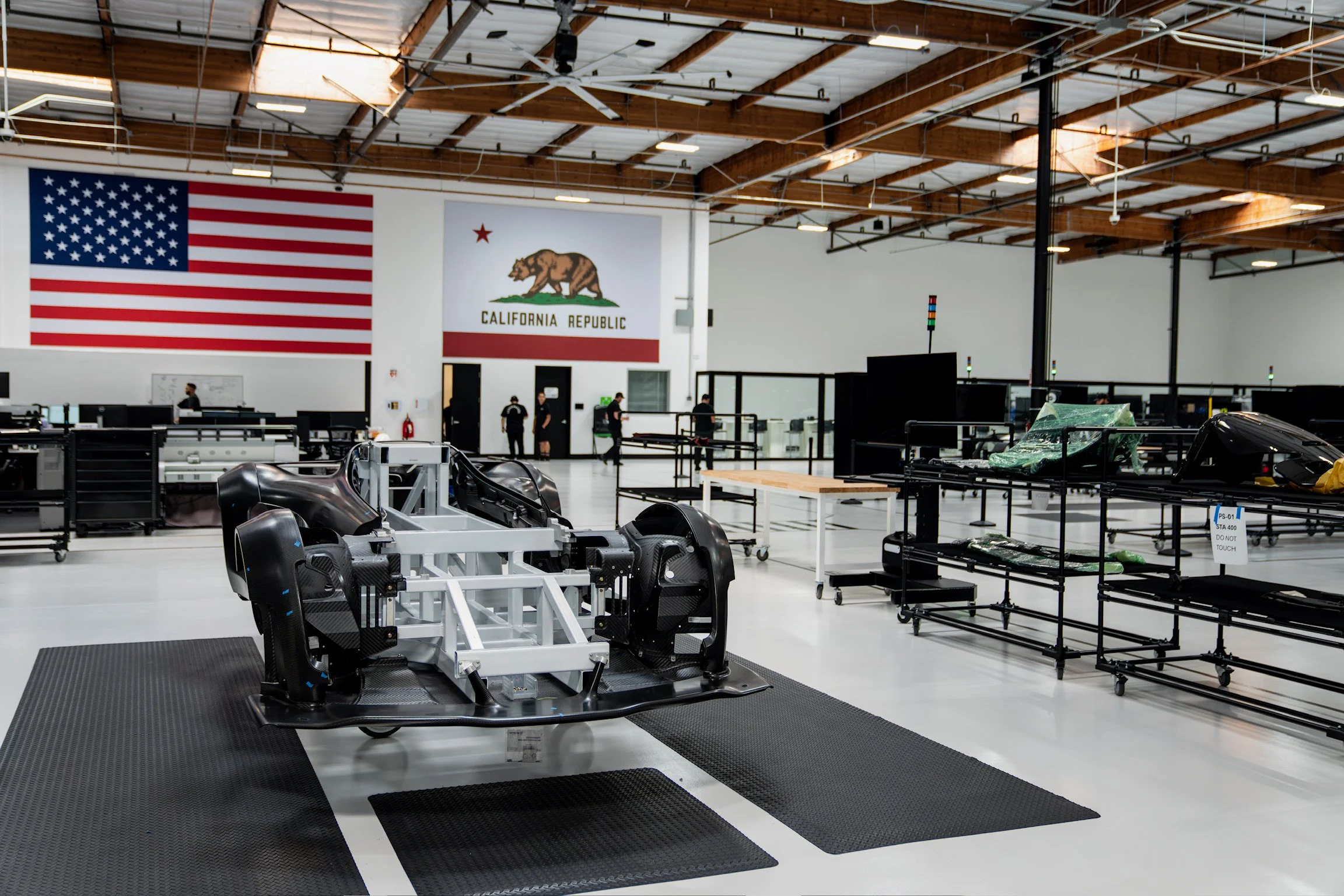
Image: Czinger
The hypercar industry is often secretive about its development methods, but several manufacturers have already embraced AI-driven design and additive manufacturing in ways that clearly signal the direction of the entire segment. These companies are not experimenting on the fringes — they are integrating these technologies deep into their engineering pipelines, producing components that are lighter, stronger, and more efficient than anything made through traditional means.
One of the most prominent pioneers is Czinger Vehicles. The American manufacturer built its 21C hypercar around a fully integrated AI–3D-printing workflow they call the “Digital Production System.” Every structural component of the vehicle — from suspension nodes to subframes — was generated through AI algorithms and produced using metal additive manufacturing. The result is a chassis architecture that looks more like a biological structure than a traditional automotive frame. The printed suspension components, for example, combine complex, organic geometries with hollow lattice structures that reduce weight while maintaining incredible stiffness. Czinger claims weight reductions of up to 40 percent compared to traditionally machined parts, alongside increased strength and improved crash performance. Their work is the clearest real-world demonstration of what happens when both technologies are treated as core engineering pillars rather than optional enhancements.
Koenigsegg is another early adopter. The Swedish manufacturer has been using 3D printing for more than a decade, initially for rapid prototyping and later for structural and powertrain components. The turbo housings of several Koenigsegg models are produced through 3D printing, allowing highly optimized internal airflow paths that improve thermal efficiency and responsiveness. The brand has also used additive manufacturing for lightweight exhaust elements and air ducts that would be impossible to produce with traditional tooling. Though Koenigsegg does not rely on AI-driven design to the same extent as Czinger, its ongoing integration of complex printed components shows a clear commitment to pushing manufacturing boundaries.
Bugatti has also incorporated 3D-printed titanium parts in its vehicles, most notably the Chiron’s brake caliper prototype — at one point the largest functional titanium component manufactured through additive methods in the automotive industry. This caliper offered exceptional stiffness while weighing significantly less than the standard version. While the caliper did not reach full production, Bugatti continues to use printed components in areas like heat shields, mounts, and aerodynamic structures, taking advantage of the ability to create highly optimized geometries.
Porsche has applied 3D printing to both motorsport and road applications. The brand has developed 3D-printed pistons for the 911 GT2 RS, allowing intricate internal cooling channels that improve thermal management and durability. These pistons withstood extreme racing conditions while delivering measurable performance gains, including increased power and lower temperatures — results impossible to achieve with cast or forged pistons.
Collectively, these real-world applications show that AI and additive manufacturing are not hypothetical innovations. They are active tools shaping the next generation of hypercars. The companies that adopt them early gain dramatic advantages in performance, weight reduction, and development speed — setting the foundation for an industry-wide transformation.
Affiliate Disclosure
Disclosure: Some of the links on this website are affiliate links. This means that if you click on one of these links and make a purchase, we may earn a small commission at no extra cost to you.
We only recommend products and services that we trust or that are directly relevant to our content. Affiliate earnings help us keep this platform independent and of high quality.
Chapter 6: Performance Potential — Can These Technologies Redefine Speed?
The core question behind AI-driven design and additive manufacturing is simple: can these technologies meaningfully increase real-world hypercar performance? The answer is not speculative — it is already measurable. While traditional engineering has pushed combustion engines, aerodynamics, and materials close to their physical limits, AI and 3D printing introduce a completely new performance layer that does not depend on more power. Instead, they improve how efficiently that power is used, how effectively forces are managed, and how precisely every structural element contributes to speed.
One of the most significant performance gains comes through weight reduction. Hypercars operate on the edge of traction, aerodynamics, and power delivery. Every kilogram removed improves acceleration, braking, cornering, and thermal stability. With AI-optimized, 3D-printed components, manufacturers routinely shave off 20–40 percent of the mass of structural brackets, uprights, suspension joints, and cooling-related parts. Weight is removed exactly where it matters most: at moving components and unsprung mass. In high-performance dynamics, that is worth far more than adding horsepower.
Another major performance domain affected is aerodynamic efficiency. Traditional CFD tools are powerful but limited by computation time and the need for human-guided iteration. AI-based aerodynamic analysis evaluates far more configurations in dramatically less time. When these optimized shapes are handed off to 3D printing, engineers can integrate aerodynamic functions directly into structural components. Internal ducting, hidden air channels, pressure-balancing voids, and complex curvature become manufacturable. These elements can improve downforce, reduce turbulence, and stabilize high-speed airflow in ways conventional manufacturing would never allow.
Thermal management is equally critical for speed. Hypercars generate intense heat from combustion engines, hybrid battery systems, and braking forces. AI can analyze thermal behavior across thousands of simulations, identifying hotspots and proposing cooling structures precisely shaped around local temperature gradients. Additive manufacturing can then produce components with integrated cooling channels, internal fins, or variable-density structures that dissipate heat far more effectively than cast or machined parts. Cooler engines, brakes, and batteries maintain performance longer and more consistently — a decisive advantage on track or during high-speed runs.
Additionally, the combination of AI and 3D printing significantly improves structural rigidity. Generative design creates components in which load paths follow the exact stress curves generated during acceleration, braking, and cornering. This improves chassis stiffness without excess material. A stiffer structure enhances steering precision, responsiveness, and high-speed stability — key traits for hypercars chasing top speed and track dominance.
Finally, performance extends beyond the vehicle itself. Development speed becomes a component of performance. Cars can be engineered, tested, and refined faster than ever, allowing manufacturers to iterate more aggressively and push boundaries without long delays.
In total, these technologies do not just enhance one area of performance — they elevate every key performance domain simultaneously. If the history of hypercars is defined by leaps, not steps, AI and additive manufacturing represent the next leap.
Chapter 7: Challenges and Limitations — What’s Still Holding It Back?
Despite the enormous potential of AI-driven design and additive manufacturing, the hypercar industry cannot fully lean on these technologies without confronting several real limitations. The hype is justified, but the barriers are equally real. These challenges—technical, economic, and regulatory—explain why even the most advanced manufacturers cannot yet rely on AI and 3D printing for high-volume structural components.
One of the most significant obstacles is material reliability. While printed titanium, aluminum alloys, and Inconel have reached impressive maturity, they still exhibit variability depending on printer calibration, powder quality, heat treatment, and build orientation. Consistency must be absolute for load-bearing hypercar components. Traditional forging and machining still deliver more predictable grain structure and fatigue resistance, which is why some manufacturers remain cautious when printing critical safety parts like suspension arms, crash structures, or steering components. The technology is improving, but not at a point where regulations universally accept it without extensive validation.
Production speed and scalability also present limitations. Hypercars are low-volume vehicles, which makes 3D printing ideal for one-off or small-batch components. But even then, printing a single large structural part can take dozens of hours, followed by heat treatment, machining, inspection, and stress testing. Scaling this process for multiple units—especially when each component requires slightly different optimization—remains slow and costly. AI can generate designs rapidly, but manufacturing cannot yet keep up.
Another challenge lies in regulatory approval and certification. Automotive safety bodies were built around traditional manufacturing norms. A generative design with lattice internals does not resemble any part they are used to evaluating. Certifying such components requires extensive testing, documentation, and often repeated trials, because there is no long-term standard for fatigue and crash behavior of complex printed structures. The regulatory framework is lagging behind the technology.
Software dependency introduces additional risk. Generative AI tools depend heavily on algorithmic assumptions and training datasets. If the dataset is incomplete or biased toward certain geometries, the AI can overlook edge cases—resulting in designs that perform well in simulation but fail under atypical load scenarios. Engineers must manually verify these outputs, adding another layer of time and cost.
Cost remains a practical limitation. High-performance metal printers, especially those capable of producing hypercar-grade components, cost several million euros and require specialized operators. Titanium powder is expensive, post-processing equipment adds further cost, and scrap from failed prints is significant. For boutique manufacturers this is manageable; for others it becomes a financial barrier.
Lastly, there is a cultural and operational challenge. The shift from human-led design to AI-guided engineering requires teams with completely different skill sets—data scientists, algorithm engineers, computational designers. Traditional automotive companies are not structured for this transition.
In short, the limitations are not theoretical. They are the reason AI and additive manufacturing have not yet fully replaced conventional engineering. These technologies are powerful, but their practical and regulatory constraints must be solved before the next hypercar revolution can truly scale.
Chapter 8: Outlook — The Road to the Next Hypercar Revolution
The convergence of AI and additive manufacturing is not a distant vision; it is a transformation already underway. Yet the true revolution lies ahead. What we see today in brands like Czinger, Koenigsegg, Bugatti, and Porsche are early demonstrations — proof-of-concept milestones that hint at a much larger shift waiting to unfold. The next decade will determine whether AI-driven design and 3D printing evolve from cutting-edge tools to the dominant foundation of hypercar engineering.
One of the clearest signals for the future is the steady move toward fully digital development pipelines. Instead of traditional workflows where design, simulation, prototyping, and testing occur in discrete steps, manufacturers will increasingly merge these phases into a continuous digital loop. AI will simulate and optimize structural, aerodynamic, and thermal behavior in real time. A change in one area will automatically trigger adjustments in others. This interconnected process will eliminate many inefficiencies of today’s engineering cycles and drastically shorten development timelines.
Another major trend is the emergence of modular generative platforms. These systems will allow manufacturers to reuse digital DNA — structural patterns, cooling strategies, aerodynamic modules — across multiple vehicle models. Instead of designing components from scratch, engineers will call upon AI-generated templates that can be instantly adapted to different use cases. This approach could redefine how limited-series hypercars are created: faster, more flexible, and with significantly lower development costs.
Additive manufacturing will also advance beyond titanium or aluminum components. Future printers will be capable of producing multi-material structures with varying densities, embedded sensors, and even integrated electronics. Imagine a suspension upright with built-in stress sensors, or a heat exchanger printed with copper microchannels. These hybrid components could drastically improve performance, reduce weight, and streamline complexity by combining what were once multiple parts into a single functional unit.
Regulatory adaptation is another crucial stepping stone. As safety authorities gain more experience evaluating printed and AI-designed components, certification processes will become more standardized and predictable. This shift is essential for broader adoption. Without regulatory alignment, even the most advanced manufacturers will remain cautious about deploying AI-optimized structures in critical areas.
Perhaps the most exciting future development is the possibility of real-time adaptive design, where driving data collected from early prototypes feeds directly back into AI systems. The car becomes part of its own development loop. Every kilometer of testing teaches the system how to optimize the next iteration, producing vehicles that evolve faster than any traditional engineering team could manage.
Despite current limitations, the long-term trajectory is unmistakable. Hypercars are entering a phase where computational intelligence and additive manufacturing define performance more than engine displacement or horsepower figures. The brands that embrace this shift will set the pace for the next generation — one where speed is not just a product of power, but of algorithms, digital fabrication, and unprecedented design freedom.
The next hypercar revolution will not be louder or more aggressive. It will be smarter, lighter, more efficient — and fundamentally reimagined from the inside out.
Affiliate Disclosure
Disclosure: Some of the links on this website are affiliate links. This means that if you click on one of these links and make a purchase, we may earn a small commission at no extra cost to you.
We only recommend products and services that we trust or that are directly relevant to our content. Affiliate earnings help us keep this platform independent and of high quality.

